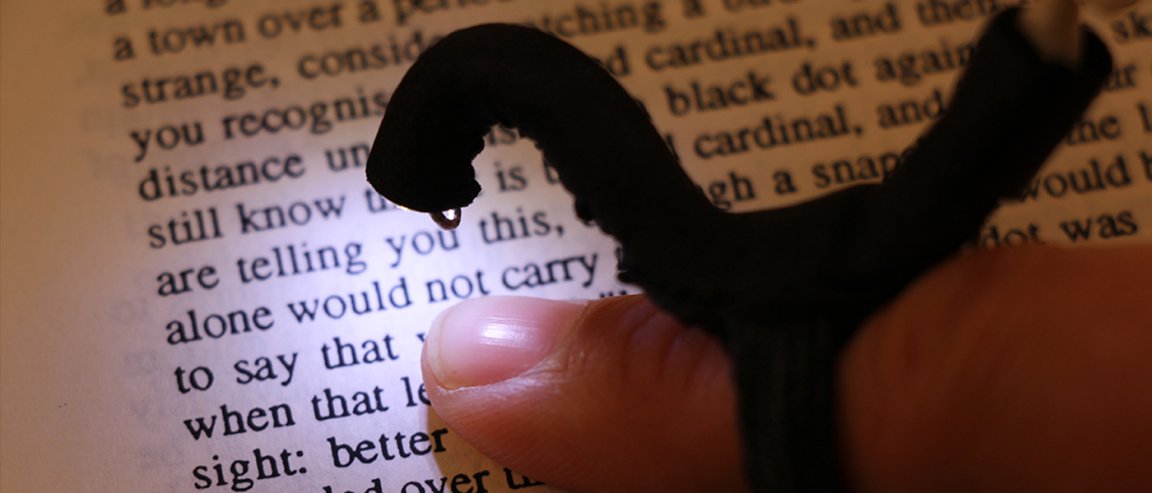
Point and Read
Developers from the University of Maryland have combined text-reading smart software and a tiny camera originally meant for endoscopies to create HandSight, a finger-mounted camera system that can allow the blind to read non-Braille text. The technology and their testings are detailed in ACM Transactions on Accessible Computing.
The tiny camera can be clasped onto the finger, like a ring, while the rest of the device grips the wrist. As the wearer moves their finger along a line of text, the camera picks up the text and a computer reads it aloud. Audio cues and gentle vibrations from the device guide the user between lines or let them know when they need to adjust the position of their finger.
In a trial outlined in the published study, 19 blind people tested out HandSight. On average, they were able to read between 63 and 81 words per minute, missing only a few words in each reading. This is lower than the 90 to 115 words per minute rating of an expert braille reader and well below the 200 words per minute of a person with regular sight.

A Valuable Tool
Eventually, the creators of HandSight hope to build more functionality into the device, giving it the ability to discern things like patterns and colors. Even at its current state and despite the lower reading rates, HandSight still shows potential as a tool for the blind.
Currently, many visually impaired people use text-to-speech mobile applications, which require them to snap a picture of the page. It could be difficult for a blind person to get all of the text in a photo, and the app can only reliably scan text when the images are properly focused and the text is in a simple layout. Because HandSight simplifies reading for people with visual impairments, it could prove particularly useful in instances where text is in a complicated layout, such as a menu or newspaper article.
An estimated 285 million people worldwide have visual impairments, and HindSight is just one of several recent technological innovations designed to assist them, with many others coming out of the fields of artificial intelligence and virtual reality (Blitab, a smart tablet for the blind, the AI wearable Horus, and VR headsets, to name just a few). As researchers continue to develop these new technologies, it will become easier for those millions of people with visual impairments to navigate the world around them.